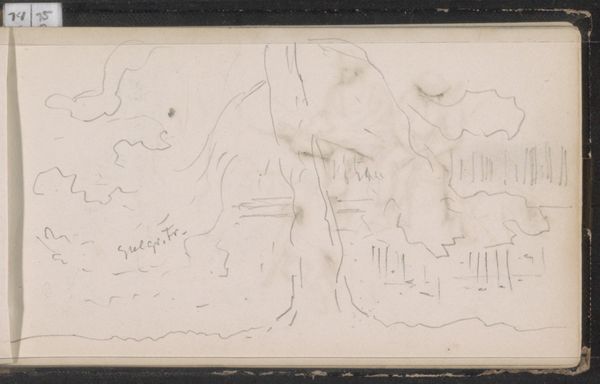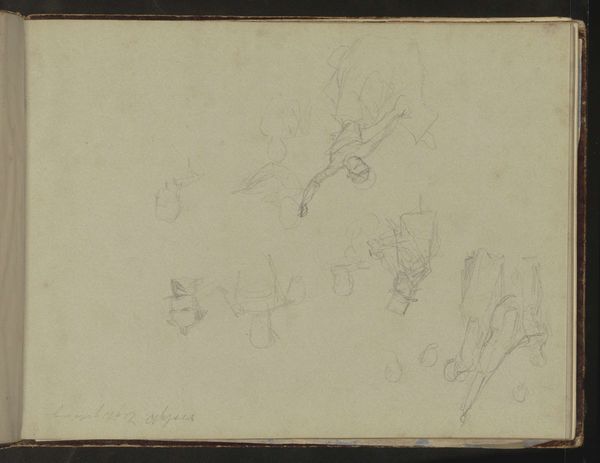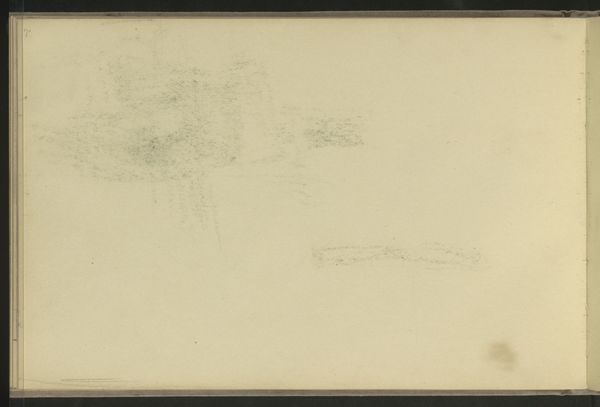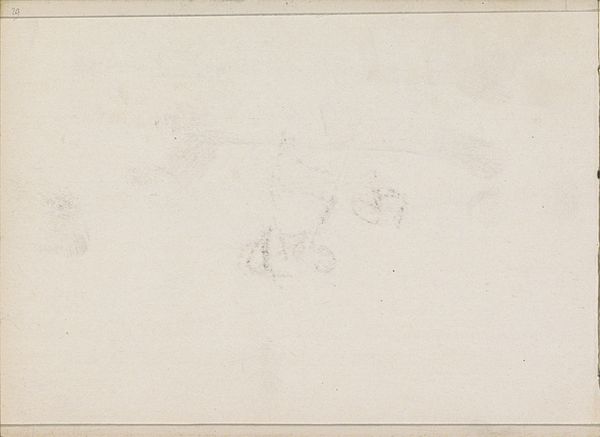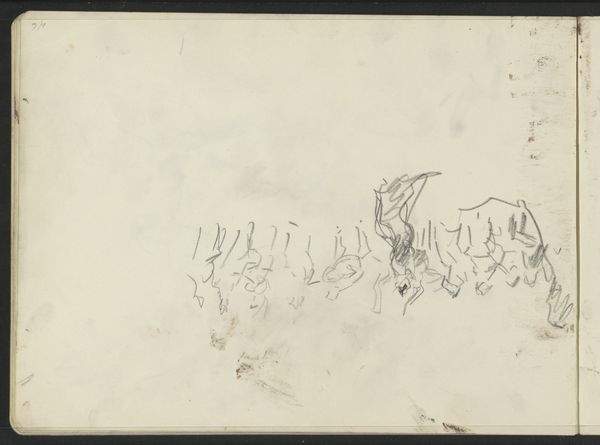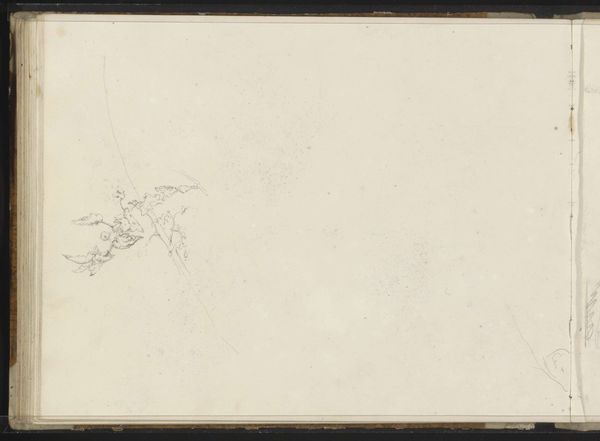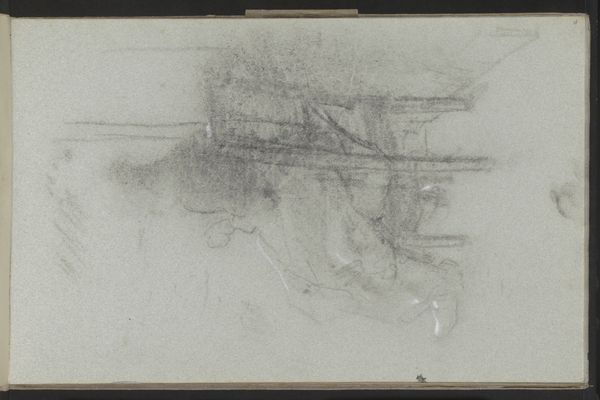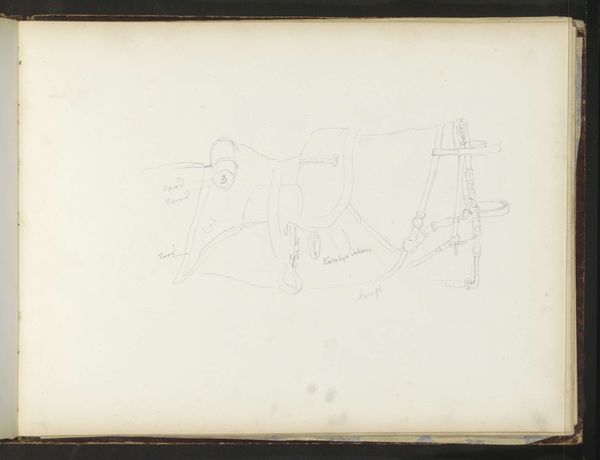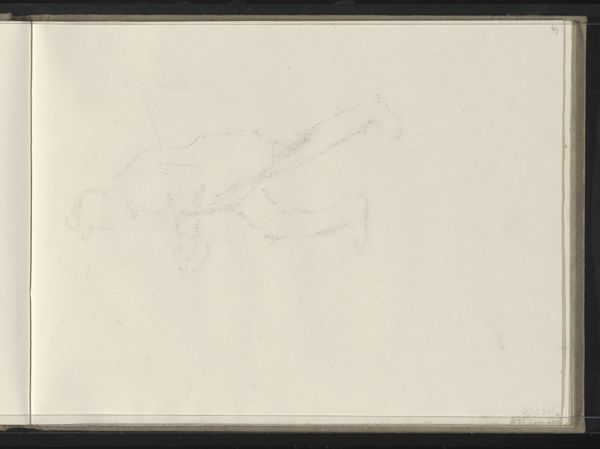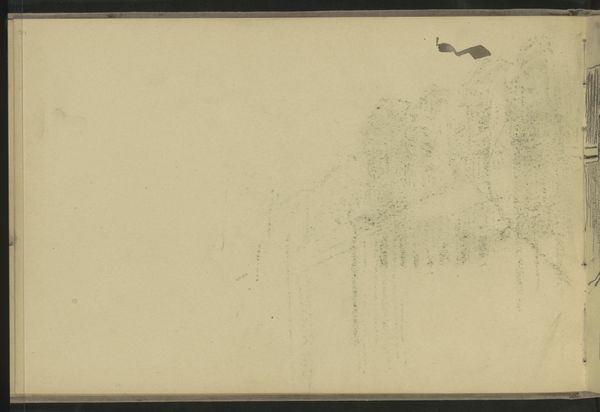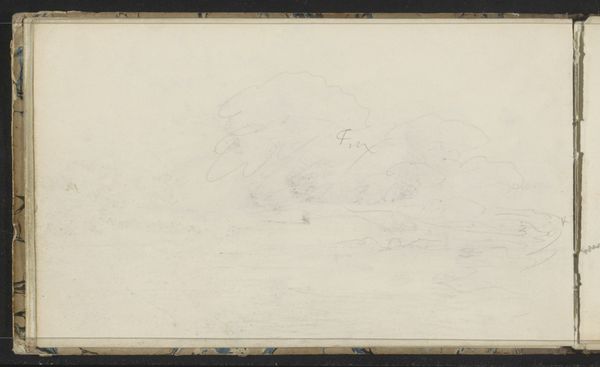
drawing, paper, pencil
#
drawing
#
landscape
#
paper
#
pencil
#
cityscape
#
building
Copyright: Rijks Museum: Open Domain
Editor: We’re looking at “Cityscape with a Tower and Bridge over a Canal” by Reinier Craeyvanger, likely created sometime between 1822 and 1880. It's a pencil drawing on paper held at the Rijksmuseum. The lines are so faint, almost ephemeral. What's your read on this quick sketch? Curator: It’s interesting to consider this work within the context of 19th-century Dutch urban development. These quick sketches, often done *en plein air*, were a way of documenting a rapidly changing cityscape. We see the rise of industrial infrastructure juxtaposed with older, traditional architectural elements. It hints at the social shifts occurring, doesn't it? The bridge connecting different parts of the city physically also speaks to a social bridge. Editor: So, these drawings served almost as a record, like a photograph would later? Curator: Exactly. Think about who these images were created for. They might have been commissioned by city officials, merchants investing in urban projects, or even sold as souvenirs. The act of drawing these scenes becomes a political one – whose perspective is being represented, and what stories are being told about urban progress? Editor: It makes you wonder which specific parts of the city they chose to highlight. Were they actively avoiding the less glamorous areas? Curator: Precisely. And even the way Craeyvanger renders the scene, the delicate pencil strokes... it suggests a certain refined, perhaps idealized, vision of city life. Did these choices consciously serve to promote urban expansion, downplaying associated hardships for example? Editor: That is quite fascinating, reframing something that appears simple as a document within these wider socioeconomic forces. It's given me so much to think about! Curator: And for me it's useful to explore it together and consider our present, our own perceptions, as viewers.
Comments
No comments
Be the first to comment and join the conversation on the ultimate creative platform.
